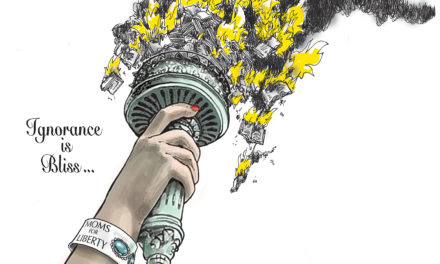Harvard economist and New York times columnist Ed Glaeser speaks at noon Thursday at Leadership Memphis’s Community luncheon at University of Memphis Holiday Inn. Syndicated columnist Neal Peirce this week gives a preview of Mr. Glaeser’s new book, Triumph of the City:
Mahatma Gandhi once wrote that “the true India is to be found not in its few cities, but its 700,000 villages.” Thomas Jefferson celebrated rural life, inveighing against cities as “sores” on the body politic.
Both men were wrong. That’s the message of Harvard economist Edward Glaeser in his new book, “Triumph of the City” (Penguin Books), its message telegraphed in the subtitle: “How our greatest invention makes us richer, smarter, greener, healthier, and happier.”
From the dawn of history, Glaeser argues, the intensely social human species has advanced by doing things together. And it’s cities, which make it so easy to watch and listen and learn from so many other players, that enable the collaboration, the constant flow of new information and ideas to make humanity shine most brightly. Check every front from houses of commerce to universities to the arts, bright shopping streets to glistening architecture to great public places — and cities excel. Imagine, for example, this month’s Egyptian revolution without Cairo’s Tahrir Square.
And with their wealth of connections, cities naturally generate the most wealth. On average, Glaeser notes, as the share of a country’s population that’s urban goes up 10 percent, the entire country’s per capita output rises 30 percent. In the U.S., workers in metropolitan areas with big cities earn 20 percent more than workers outside metro areas. And the income gap, city versus country, is even stronger in poor countries.
Indeed, a better livelihood — some hope of escaping the grinding poverty of rural life — is the reason hundreds of millions are now pouring into the world’s developing country cities.
That doesn’t mean there aren’t great scourges of city life — disease, crime, congestion, social tensions. “For every Fifth Avenue,” Glaeser notes, “there’s a Mumbai slum; for every Sorbonne, there’s a D.C. high school guarded by metal detectors.” He’s candid about the need for farsighted city leadership to mobilize support for major infrastructure. A prime example: the safe water and sewage systems cities that New York and other cities began in the late 1800s, all but erasing waterborne disease and extending life expectancies — essential services still missing in many slums of the developing world.
Plus, he notes, all cities need to think and strategize smartly to come out of the deep declines shifting world economics sometimes deliver. The flight of auto industry jobs south and overseas has left Detroit largely bereft and its recovery path isn’t clear.
Though Detroit is not unique — industrial cities from Buffalo to Bremen, Cleveland to Glasgow, have also lost population, and need to find recovery strategies based on what Glaeser defines as the historic qualities that have always made cities prosper: competition, connection, and human capital, symbolized today by such globally connected present-day metropolises as London, New York, Bangalore, San Francisco and Singapore.
Cities’ concentrations of humans are also key, Glaeser argues, to a green planet, to taming harmful carbon emissions in this century, because per capita they emit so much less carbon. That means less driving, more walkable cities. U.S. tax policies, he suggests, need to be uprooted “to encourage people to live in modestly sized urban aeries” instead of widening suburban rings, and to “stop idolizing home ownership which favors suburban tract homes over high-rise apartments.”
A new compactness imperative means, he insists, removing cities’ many restraints on high buildings, saving some historic buildings and places but allowing a rapid turnover of yesterday’s urban land for tall structures that can house thousands, not hundreds of people per square block.
If the U.S. does that, he suggests, it will be on firmer ground in urging India and China, with their immense populations and growing wealth, to build high, dense cities– not sprawl as we have. If the Chinese and Indian per capita carbon emissions should rise to American levels, Glaeser notes, the world’s total carbon consumption would soar 139 percent.
The compelling quality of Glaeser’s book is its connectedness: recognizing the parallels, common challenges, and the immense opportunities of cities across the globe. It points to the need for much more global urban dialogue on an amazing array of fronts, pushed forward by movement of people among metropolises and liberal immigration laws.
Yet strangely, one great urban asset goes unnoted: What strong and growing cities mean for world population. It’s true, the flood of new residents pouring into cities from rural areas carries staggering numbers. Goldman Sachs projects, for example, that 31 villagers will continue to pour into an Indian city every minute over the next 40 years.
But cities are poised to defuse the planet’s population explosion. As women move to cities, and especially as they gain employment and some education, they choose to have fewer children. It will take more decades for world population to stop its momentous rise. But as it peaks — at about 9.2 billion somewhere around mid-century — cities will be the key.



